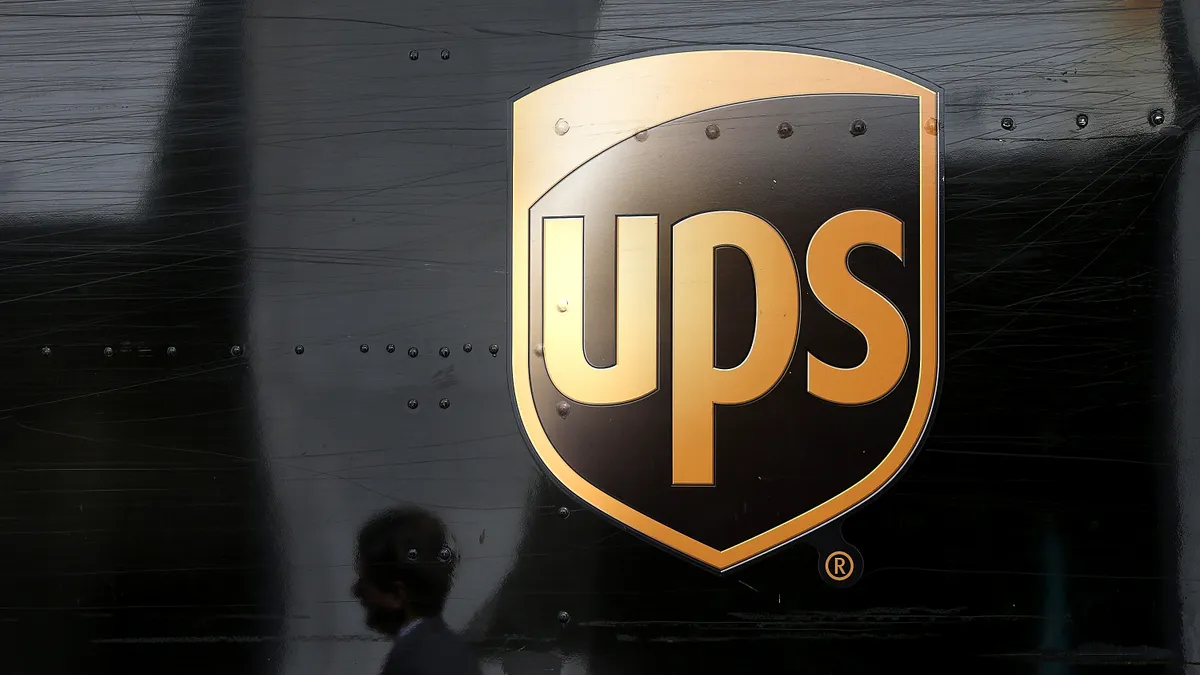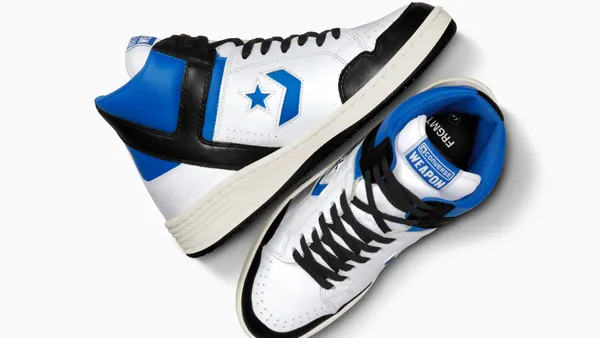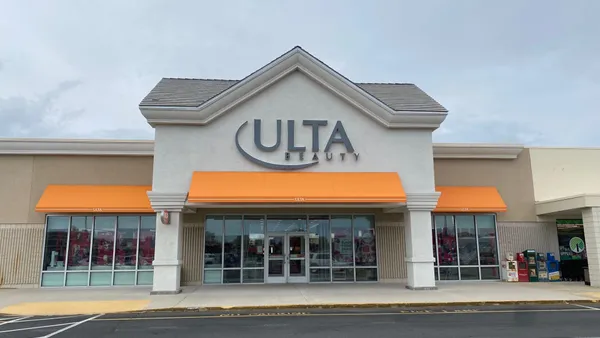Dive Brief:
- UPS' average U.S. daily volume fell 3% year over year, as commercial delivery growth couldn't make up for a drop in residential packages, CFO Brian Newman said on the company's Q1 earnings call.
- The decline, equal to 611,000 packages daily, was greater than the parcel carrier expected. UPS planned for U.S. volumes to decline slightly in the quarter, but the company missed the anticipated drop "by about 500,000 pieces per day," CEO Carol Tomé said.
- Despite the volume decline, UPS' per-package revenue increased 9.4% as the company continues to follow its strategy of pursuing more profitable deliveries. The carrier's pricing "is expected to remain firm," according to Newman.
Dive Insight:
Home delivery demand skyrocketed when the COVID-19 pandemic took hold, but the pace of growth has finally slowed and cooled demand for UPS' services. E-commerce sales grew just 2.6% year over year in March, the weakest gain in more than three years, according to GlobalData research. Consumers shifted more of their spending from goods to services while enduring inflation.
“The fear is that, after a strong 2-year period, the company could see revenue growth waver thanks to high inflation," Patrick Donnelly, senior analyst at Third Bridge, said in emailed remarks about UPS' results. "We can expect parcel volumes to decrease in line with consumer spending."
Stimulus check spending sparked a surge in already elevated parcel volumes for UPS last year. Volumes increased by 400,000 pieces a day for UPS when stimulus checks reached consumers last year, according to Tomé.
Matching that in Q1 2022 was difficult due to external factors facing customers. After omicron's negative impact on volumes subsided in February, climbing energy prices, geopolitical uncertainty and COVID-19 lockdowns in Asia stymied volume growth again, Newman said.
"We had planned for volume to be down slightly in the first quarter based on volume projections from a few of our largest customers," Newman said. "We expected to fill this gap with other enterprise volume, but market conditions did not support, and our volume was lower than planned."
More than half of UPS' volume decline was tied to its SurePost service, in which the Postal Service completes the last leg of delivery for the company. Volumes handled by the service declined by 312,000 packages daily year over year.
Five customers drove more than 60% of SurePost's decline, according to Tomé. The customers told UPS it was difficult to match last year's stimulus-fueled spending activity.
But UPS is now "trending in the right direction" in terms of volume, Tomé said, with April showing an improvement versus March. Additionally, with fewer packages flowing through UPS' network, the company has more peak season capacity it can leverage "to go out and win" new customers, she added.
UPS' largest customer Amazon unveiled "Buy with Prime" last week, which allows consumers to leverage their Prime benefits — including one-day and two-day shipping speeds through Amazon's massive fulfillment network — on websites outside of Amazon.
In response to an analyst question about the implications of Buy with Prime on UPS' business, Tomé said the two companies have "a mutually beneficial relationship" on what Amazon packages UPS delivers versus what is fulfilled in-house.
"As it relates to their latest announcement, we see that as a very clever marketing play by Amazon," Tomé said. "But just putting an Amazon Prime badge on a [small and medium-sized business] website, if the website even exists, doesn't present much risk to us, we believe."
















